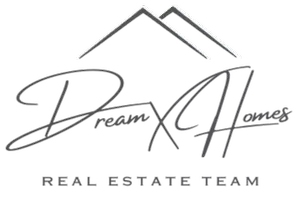Tired of Feeling Lost in the Home Loan Maze?
Get 5 Insider Secrets from NAR(National Association of Realtors) that Make Navigating Your Loan Simple and Stress-Free!
I consent to receive calls and texts from DreamX Homes & Glasshouse Realty Group for real estate information and assistance. You can unsubscribe anytime.
How to Calculate FHA Loan Payments in 5 Easy Steps
How to Calculate FHA Loan Payments in 5 Easy Steps
FHA loan calculator: This essential tool helps potential homeowners easily estimate their monthly mortgage payments with an FHA loan. Known for their low down payments and relaxed credit score requirements, FHA loans are a popular choice for first-time and low-to-moderate income buyers.
In today's real estate market, understanding your financing options is crucial, especially if you're a tech-savvy young professional considering your first home purchase in a vibrant Ohio city. An FHA loan opens doors with clear advantages:
- Low Down Payment: Start with just 3.5% down if your credit score is 580 or higher.
- Lenient Credit Requirements: Even if your credit score is below 600, you can still qualify.
- Because it's insured by the government, lenders are more willing to work with you.
Navigating home loans doesn't have to be overwhelming. With the help of an FHA loan, you can make a smart and informed decision that fits your lifestyle and budget.

Understanding FHA Loan Basics
When you're looking at FHA loans, there are a few key things to keep in mind: down payment, credit score, and loan limits. These factors will help you understand how much you can borrow and what you'll need to qualify.
Down Payment
One of the biggest perks of an FHA loan is the low down payment requirement. If your credit score is 580 or higher, you can get started with just 3.5% of the purchase price. For example, if you're buying a $200,000 home, your down payment could be as low as $7,000.
Even if your credit score is between 500 and 579, you can still qualify for an FHA loan, but you'll need a down payment of at least 10%. This flexibility makes FHA loans a great option for those who might not have a lot of savings.
Credit Score
FHA loans are known for their lenient credit score requirements. While many conventional loans require a credit score of 620 or higher, FHA loans are accessible to borrowers with scores as low as 500. This is ideal if you're working on building or rebuilding your credit.
Lenders are more willing to offer FHA loans because they're backed by the Federal Housing Administration. This means less risk for the lender, which can translate to more opportunities for you.
Loan Limits
FHA loans also have specific loan limits, which can vary by county. These limits are based on local housing prices and can range from lower amounts in rural areas to higher limits in costly urban markets. For instance, in high-cost areas like San Francisco, the loan limits can be significantly higher than in a rural county.
To find out the loan limit in your area, you can check with your lender or use resources provided by the Department of Housing and Urban Development (HUD).

Understanding these basics will help you figure out if an FHA loan is the right choice for you. Next, we'll dive into how to determine your loan amount, so stay tuned!
Step 1: Determine Your Loan Amount
Before diving into the FHA loan calculator, you need to determine your loan amount. This is a crucial step in understanding how much you’ll be borrowing and what your monthly payments might look like.
Purchase Price
Start with the purchase price of the home you're interested in. This is the total amount you agree to pay for the property. For example, let's say you're eyeing a charming home listed at $250,000.
Down Payment
Next, calculate your down payment. With an FHA loan, this could be as low as 3.5% of the purchase price if your credit score is 580 or above. For our $250,000 home, this means you’d need a down payment of just $8,750.
If your credit score is between 500 and 579, you’ll need a 10% down payment, which would be $25,000 for the same home.
Base Loan Amount
After determining your down payment, subtract it from the purchase price to find your base loan amount. Using our example:
- Purchase Price: $250,000
- Down Payment: $8,750 (if credit score is 580+)
- Base Loan Amount: $250,000 - $8,750 = $241,250
This base loan amount is the starting point for calculating your monthly mortgage payments. It’s important to note that this figure doesn’t include other costs, like the upfront Mortgage Insurance Premium (MIP), which can be added to your loan balance.
Determining your loan amount is the foundation for understanding your future mortgage payments. Once you have this number, you can move on to calculating interest and principal to see how your loan will amortize over time.
Step 2: Calculate Interest and Principal
Now that you have your base loan amount, it's time to tackle interest and principal—the backbone of your mortgage payment. Understanding these elements will help you see how your loan will be paid off over time, known as amortization.
Interest Rate
The interest rate is the cost of borrowing money. It's expressed as a percentage of your loan amount. For instance, if your loan amount is $241,250 and your interest rate is 3.5%, you’ll pay $8,443.75 in interest in the first year alone.
Interest rates can vary based on several factors, including your credit score and market conditions. A higher credit score often means a lower interest rate, saving you money in the long run.
Loan Term
The loan term is the amount of time you have to repay your mortgage. Common FHA loan terms are 15 and 30 years.
- 30-Year Loan: Lower monthly payments but more interest over time.
- 15-Year Loan: Higher monthly payments but less interest paid overall.
Choosing the right loan term depends on your financial situation and long-term goals.
Amortization
Amortization is the process of paying off your loan over time. Each monthly payment includes a portion for interest and another for principal.
In the early years of your loan, a larger part of your payment goes toward interest. As time passes, more of your payment applies to the principal. This gradual shift is why it's beneficial to understand how amortization works.
Here's a basic breakdown of how your payments might look over time:
| Year | Principal Payment | Interest Payment |
|---|---|---|
| 1 | $3,000 | $8,443.75 |
| 10 | $5,500 | $5,943.75 |
| 20 | $8,000 | $3,443.75 |
As you can see, the principal payment increases over time, while the interest payment decreases. This is typical for fixed-rate loans.
By understanding these components, you can better manage your mortgage and plan for the future. Next, we'll dive into how FHA mortgage insurance affects your payments.
Step 3: Include FHA Mortgage Insurance
FHA loans come with a unique feature: FHA mortgage insurance. This insurance is designed to protect lenders from losses if borrowers default on their loans. Let's break it down into two main components: Upfront Mortgage Insurance Premium (UFMIP) and Annual Mortgage Insurance Premium (MIP).
Upfront Mortgage Insurance Premium (UFMIP)
The Upfront MIP is a one-time fee that you pay at the start of your loan. It's calculated as 1.75% of your base loan amount. The good news? You can roll this cost into your mortgage, so you don't have to pay it out of pocket.
For example, if your base loan amount is $200,000, your UFMIP would be:
[ \text{UFMIP} = 200,000 \times 0.0175 = $3,500 ]
This amount can be added to your loan, making your total loan amount $203,500.
Annual Mortgage Insurance Premium (MIP)
The Annual MIP is a yearly fee that you pay in monthly installments as part of your mortgage payment. The rate varies based on your loan amount, loan term, and loan-to-value ratio (LTV). For most FHA loans with a term longer than 15 years and an LTV greater than 95%, the annual MIP is 0.55%.
So, if your loan amount is $200,000, your annual MIP would be:
[ \text{Annual MIP} = 200,000 \times 0.0055 = $1,100 ]
Divided by 12, this adds about $91.67 to your monthly payment.
How These Premiums Affect Your Payment
Including both UFMIP and Annual MIP can significantly impact your monthly payment and overall loan cost. It's crucial to understand these costs when using an FHA loan calculator to determine your monthly payment and ensure you can afford the loan.
Understanding these insurance premiums helps you see the full picture of your FHA loan's affordability. Next, we'll explore how to factor in property taxes and homeowners insurance to complete your monthly payment calculation.
Step 4: Factor in Property Taxes and Insurance
When calculating your monthly mortgage payment, it's important not to overlook property taxes and homeowners insurance. These are essential components that contribute to the total cost of homeownership. Here's how they fit into your FHA loan payment.
Property Taxes
Property taxes are levied by the local government based on the assessed value of your home. These taxes fund community services like schools, roads, and emergency services. The amount can vary significantly depending on where you live.
Most lenders require that property taxes be paid through an escrow account. This means a portion of your monthly mortgage payment goes into escrow to cover these taxes when they're due.
For example, if your annual property tax is $3,000, your monthly contribution would be:
[ \text{Monthly Property Tax} = \frac{3,000}{12} = $250 ]
Homeowners Insurance
Homeowners insurance protects your property against risks like fire, theft, and certain natural disasters. Lenders require this insurance to safeguard their investment in your property. Just like property taxes, the premium is typically paid through an escrow account.
Let's say your annual homeowners insurance premium is $1,200. The monthly cost would be:
[ \text{Monthly Homeowners Insurance} = \frac{1,200}{12} = $100 ]
Escrow Account
An escrow account is a separate account where your lender holds your property tax and insurance payments until they are due. This ensures these obligations are paid on time without you having to manage them separately.
Including these costs in your mortgage payment simplifies budgeting, as you make a single payment that covers principal, interest, taxes, and insurance (PITI).
Bringing It All Together
By factoring in property taxes and homeowners insurance, you get a clearer picture of your total monthly mortgage payment. This is crucial for determining how much house you can afford.
Using an FHA loan calculator can help you estimate these costs accurately, ensuring your budget aligns with your homeownership goals.
Next, we'll explore how to use an FHA loan calculator to finalize your monthly payment calculation and assess your affordability.
Step 5: Use an FHA Loan Calculator
Once you've gathered all the necessary information, it's time to bring it all together using an FHA loan calculator. This tool is essential for estimating your monthly mortgage payment and determining your home buying affordability.
Why Use an FHA Loan Calculator?
An FHA loan calculator helps you see the complete picture of what you'll be paying each month. It factors in not only the principal and interest but also property taxes, homeowners insurance, and FHA mortgage insurance premiums. By inputting these details, you can get a realistic idea of your monthly costs.
This is especially important for first-time homebuyers who may not be aware of all the costs associated with homeownership. Knowing your monthly obligations helps you budget more effectively and ensures you're not taking on more than you can handle.
How to Use the FHA Loan Calculator
- Enter the Home Price and Down Payment: Start by entering the purchase price of the home you're considering and your down payment amount. For FHA loans, the minimum down payment is 3.5% for those with a credit score of 580 or higher.
- Input the Interest Rate and Loan Term: Next, enter the interest rate and loan term. Most FHA loans are 30-year fixed-rate mortgages, but you can choose a shorter term if desired.
- Add Property Taxes and Insurance: Don't forget to include estimated property taxes and homeowners insurance. This will give you a more comprehensive view of your monthly payment.
- Include FHA Mortgage Insurance: The calculator will also consider the upfront and annual mortgage insurance premiums required by FHA loans. These costs are crucial in determining your total payment.
- Review Your Estimated Monthly Payment: Once all information is entered, the calculator will provide an estimate of your monthly payment. This includes principal, interest, taxes, insurance, and mortgage insurance premiums.
By using an FHA loan calculator, you can confidently assess how much house you can afford. It helps you make informed decisions and avoid financial strain, ensuring your path to homeownership is smooth and stress-free.

Next, we'll address some frequently asked questions about FHA loans to help you steer any remaining uncertainties.
Frequently Asked Questions about FHA Loans
Is FHA always 3.5% down?
Not always. While the FHA loan program is known for its low down payment requirement of just 3.5%, this only applies if your credit score is 580 or higher. If your credit score falls between 500 and 579, you can still qualify for an FHA loan, but you'll need to put down at least 10%. This flexibility makes FHA loans an attractive option for those who may not have a perfect credit history.
How much can I qualify for with an FHA loan?
The amount you can qualify for with an FHA loan depends on several factors, including your income, debts, and the loan limits in your area. FHA loan limits vary by county and are designed to reflect local housing market conditions. In high-cost areas, you can borrow more compared to low-cost regions. Additionally, your eligibility is influenced by your debt-to-income ratio and credit score. It's crucial to check the specific loan limits in your area to understand how much you can borrow.
Do FHA loans have higher monthly payments?
FHA loans often come with higher monthly payments compared to conventional loans. This is mainly due to the mortgage insurance premiums (MIP) that FHA borrowers must pay. Unlike private mortgage insurance (PMI) for conventional loans, FHA mortgage insurance is required for the life of the loan if you make a down payment of less than 10%. However, if your down payment is 10% or more, you'll pay MIP for 11 years. While FHA loans may have lower interest rates, the added cost of mortgage insurance can make monthly payments higher. It's essential to compare the total monthly costs of FHA and conventional loans to determine which is more affordable for you.
Conclusion
At DreamX.Homes, we believe homeownership should be a dream within reach for everyone. FHA loans can be a great way to make this dream a reality, especially for first-time buyers or those with less-than-perfect credit. They offer lower down payments and more lenient credit requirements, making them an attractive option for many.
However, navigating the home buying process can be overwhelming. That's where we come in. Our team at DreamX.Homes specializes in providing personalized guidance custom to your unique needs and financial situation. We leverage our expertise and cutting-edge technology to ensure a transparent and smooth transaction from start to finish.
Whether you're just starting to explore your options or ready to take the next step, we're here to help. Use our FHA loan calculator to estimate your monthly payments and see how much home you can afford. Our tools and resources are designed to empower you with the knowledge you need to make informed decisions.
Buying a home is a significant milestone, and you don't have to do it alone. Let DreamX.Homes be your trusted partner on this exciting journey to homeownership.
Categories
- All Blogs 92
- Boosting Home Value 3
- Buyer Resources 13
- Eco-Friendly Upgrades 1
- First-Time Buyer Tips 2
- Home Buying & Selling 3
- Home Improvement & Staging 5
- Investment & Financing 14
- Local Attractions & Schools 5
- Local Market Trends 8
- Local Policy Changes 2
- Market & Industry News 2
- Market Insights 6
- Mistakes to Avoid 1
- Mortgage & Financing 22
- Neighborhood Spotlights 12
- Neighborhoods & Lifestyle 18
- New Construction 10
- Real Estate News & Updates 4
- Real Estate Technology 2
- Seller Resources 4
- Staging Tips 2
- Sustainability 3
Recent Posts










Tired of Feeling Lost in the Home Loan Maze?
Get 5 Insider Secrets from NAR(National Association of Realtors) that Make Navigating Your Loan Simple and Stress-Free!
I consent to receive calls and texts from DreamX Homes & Glasshouse Realty Group for real estate information and assistance. You can unsubscribe anytime.

"My job is to find and attract mastery-based agents to the office, protect the culture, and make sure everyone is happy! "


